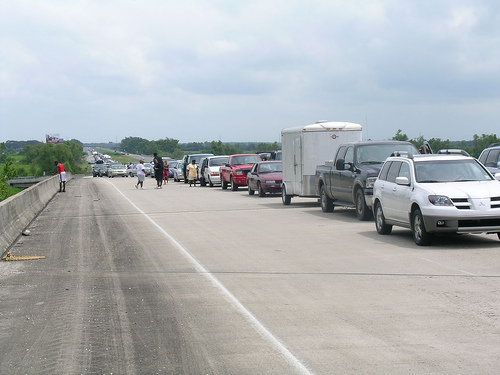Planning for Evacuations
When a disaster strikes, whether natural or man-made, emergency evacuations are likely to be an important part of the response, and transportation authorities must be ready to facilitate the flow of people. Evacuations for any event can be difficult to plan. These can be large-scale undertakings that may involve thousands, even millions, of people trying to get out of one area in a short time frame. As numerous experts point out, transportation systems are not designed for evacuations, they’re designed for normal traffic flow on a given day. Thus, systems must be adapted when there is an evacuation. Complicating the planning is the fact that inhabitants often delay departure until the last possible minute, so traffic and roads become congested even more.
The key is planning for contingencies, whether that involves alerting the public to the best routes out, rerouting traffic on highways, or providing transportation for people without cars who live in the path of the hurricane, chemical spill, or other impending disaster. Ahead are lessons learned from past evacuations (most often related to hurricanes) and a look at how researchers are trying to use what they learn to lay the groundwork for improved evacuations in the future.
Decision Factors
Before people get on the road, they have to decide to evacuate. Researchers have looked at the factors that influence that decision, especially where it relates to warnings of an approaching hurricane. There are a few main issues that people will consider, says Jay Baker, associate professor in the Department of Geography at Florida State University and president of Hazards Management Group. Housing is one. People will consider whether their house is a safe place to ride out the storm. People who live in mobile homes are much more likely to evacuate than others for that reason, Baker says.
Click here to continue reading the December Security Management cover story.
